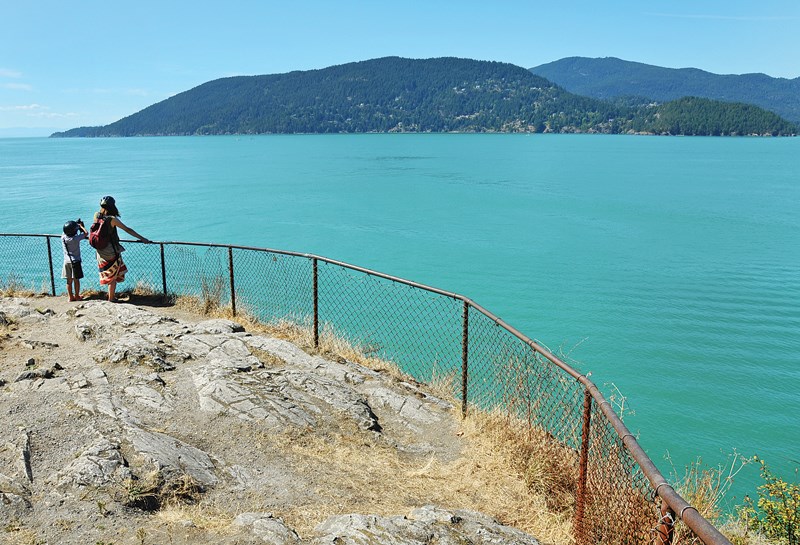Visitors to Howe Sound have been seeing green recently, and it’s not due to envy.
Microscopic algae are reproducing rapidly, lending an emerald colour to the waters of Howe Sound, according to Jessica Schultz, manager of the Howe Sound research program with the Vancouver Aquarium.
“This is a little bit unusual because this is a different type of algae that we don’t normally see around there.”
While the colour is reminiscent of the dive tank at the Rio Olympics, the algae is non-toxic and presents no health risk, according to Schultz.
Ocean acidification is the likely cause of the green bloom, which is more common on the west coast of Vancouver Island, according to Nicky Haigh, a researcher with the harmful algae monitoring program at Vancouver Island University. “What people have been seeing is – with increased acidification – more of certain coccolithophore (algae) species.”
The pale, chalky colour in the sound is caused by the coccolithophore’s limestone-like shell, Schultz noted.
Schultz wasn’t certain if climate change is responsible for the verdant wave.
“It’s possible because we haven’t seen it before, but it’s also possible that it’s something that just happens on a longer time scale,” she said.
The colour presented a puzzle for Katy Campbell, the owner of Sea to Sky Sailing in Howe Sound.
Campbell was cruising back from the Gulf Islands with a boatload of United Kingdom tourists when she noted a “bright and dramatic” border.
“There’s just this line in the water between the dark blue and the bright green,” she said. “We’ve seen algae blooms before, just maybe not quite this dramatic or sticking around for quite this long.”
The blooms don’t seem to have hurt business, Campbell said.
“They just thought it was really pretty,” she said of the tourists. “It’s a bit reassuring when the environment has some surprises for us.”
The granny-smith hue is the latest surprise in a summer previously filled with marvelous sites, according to Campbell, who said she’s seen more orca and humpback whales this season than ever before.
“There’s definitely a lot going on in the water this year,” she said.



